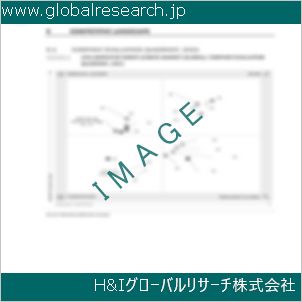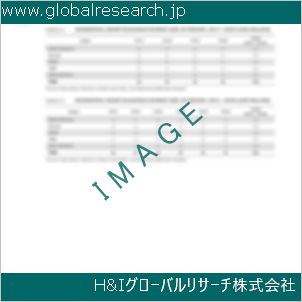1 Liquid-phase Heat Transfer Fluid Market Overview
1.1 Product Definition
1.2 Liquid-phase Heat Transfer Fluid Segment by Type
1.2.1 Global Liquid-phase Heat Transfer Fluid Market Value Growth Rate Analysis by Type 2022 VS 2029
1.2.2 Synthetic
1.2.3 Mineral
1.3 Liquid-phase Heat Transfer Fluid Segment by Application
1.3.1 Global Liquid-phase Heat Transfer Fluid Market Value Growth Rate Analysis by Application: 2022 VS 2029
1.3.2 Oil & Gas Industry
1.3.3 Chemical Industry
1.3.4 Pharmaceutical Industry
1.3.5 Food & Beverage Processing
1.3.6 Plastics & Rubber Manufacturing
1.3.7 Others
1.4 Global Market Growth Prospects
1.4.1 Global Liquid-phase Heat Transfer Fluid Production Value Estimates and Forecasts (2018-2029)
1.4.2 Global Liquid-phase Heat Transfer Fluid Production Capacity Estimates and Forecasts (2018-2029)
1.4.3 Global Liquid-phase Heat Transfer Fluid Production Estimates and Forecasts (2018-2029)
1.4.4 Global Liquid-phase Heat Transfer Fluid Market Average Price Estimates and Forecasts (2018-2029)
1.5 Assumptions and Limitations
2 Market Competition by Manufacturers
2.1 Global Liquid-phase Heat Transfer Fluid Production Market Share by Manufacturers (2018-2023)
2.2 Global Liquid-phase Heat Transfer Fluid Production Value Market Share by Manufacturers (2018-2023)
2.3 Global Key Players of Liquid-phase Heat Transfer Fluid, Industry Ranking, 2021 VS 2022 VS 2023
2.4 Global Liquid-phase Heat Transfer Fluid Market Share by Company Type (Tier 1, Tier 2 and Tier 3)
2.5 Global Liquid-phase Heat Transfer Fluid Average Price by Manufacturers (2018-2023)
2.6 Global Key Manufacturers of Liquid-phase Heat Transfer Fluid, Manufacturing Base Distribution and Headquarters
2.7 Global Key Manufacturers of Liquid-phase Heat Transfer Fluid, Product Offered and Application
2.8 Global Key Manufacturers of Liquid-phase Heat Transfer Fluid, Date of Enter into This Industry
2.9 Liquid-phase Heat Transfer Fluid Market Competitive Situation and Trends
2.9.1 Liquid-phase Heat Transfer Fluid Market Concentration Rate
2.9.2 Global 5 and 10 Largest Liquid-phase Heat Transfer Fluid Players Market Share by Revenue
2.10 Mergers & Acquisitions, Expansion
3 Liquid-phase Heat Transfer Fluid Production by Region
3.1 Global Liquid-phase Heat Transfer Fluid Production Value Estimates and Forecasts by Region: 2018 VS 2022 VS 2029
3.2 Global Liquid-phase Heat Transfer Fluid Production Value by Region (2018-2029)
3.2.1 Global Liquid-phase Heat Transfer Fluid Production Value Market Share by Region (2018-2023)
3.2.2 Global Forecasted Production Value of Liquid-phase Heat Transfer Fluid by Region (2024-2029)
3.3 Global Liquid-phase Heat Transfer Fluid Production Estimates and Forecasts by Region: 2018 VS 2022 VS 2029
3.4 Global Liquid-phase Heat Transfer Fluid Production by Region (2018-2029)
3.4.1 Global Liquid-phase Heat Transfer Fluid Production Market Share by Region (2018-2023)
3.4.2 Global Forecasted Production of Liquid-phase Heat Transfer Fluid by Region (2024-2029)
3.5 Global Liquid-phase Heat Transfer Fluid Market Price Analysis by Region (2018-2023)
3.6 Global Liquid-phase Heat Transfer Fluid Production and Value, Year-over-Year Growth
3.6.1 North America Liquid-phase Heat Transfer Fluid Production Value Estimates and Forecasts (2018-2029)
3.6.2 Europe Liquid-phase Heat Transfer Fluid Production Value Estimates and Forecasts (2018-2029)
3.6.3 China Liquid-phase Heat Transfer Fluid Production Value Estimates and Forecasts (2018-2029)
4 Liquid-phase Heat Transfer Fluid Consumption by Region
4.1 Global Liquid-phase Heat Transfer Fluid Consumption Estimates and Forecasts by Region: 2018 VS 2022 VS 2029
4.2 Global Liquid-phase Heat Transfer Fluid Consumption by Region (2018-2029)
4.2.1 Global Liquid-phase Heat Transfer Fluid Consumption by Region (2018-2023)
4.2.2 Global Liquid-phase Heat Transfer Fluid Forecasted Consumption by Region (2024-2029)
4.3 North America
4.3.1 North America Liquid-phase Heat Transfer Fluid Consumption Growth Rate by Country: 2018 VS 2022 VS 2029
4.3.2 North America Liquid-phase Heat Transfer Fluid Consumption by Country (2018-2029)
4.3.3 United States
4.3.4 Canada
4.4 Europe
4.4.1 Europe Liquid-phase Heat Transfer Fluid Consumption Growth Rate by Country: 2018 VS 2022 VS 2029
4.4.2 Europe Liquid-phase Heat Transfer Fluid Consumption by Country (2018-2029)
4.4.3 Germany
4.4.4 France
4.4.5 U.K.
4.4.6 Italy
4.4.7 Russia
4.5 Asia Pacific
4.5.1 Asia Pacific Liquid-phase Heat Transfer Fluid Consumption Growth Rate by Region: 2018 VS 2022 VS 2029
4.5.2 Asia Pacific Liquid-phase Heat Transfer Fluid Consumption by Region (2018-2029)
4.5.3 China
4.5.4 Japan
4.5.5 South Korea
4.5.6 China Taiwan
4.5.7 Southeast Asia
4.5.8 India
4.6 Latin America, Middle East & Africa
4.6.1 Latin America, Middle East & Africa Liquid-phase Heat Transfer Fluid Consumption Growth Rate by Country: 2018 VS 2022 VS 2029
4.6.2 Latin America, Middle East & Africa Liquid-phase Heat Transfer Fluid Consumption by Country (2018-2029)
4.6.3 Mexico
4.6.4 Brazil
4.6.5 Turkey
5 Segment by Type
5.1 Global Liquid-phase Heat Transfer Fluid Production by Type (2018-2029)
5.1.1 Global Liquid-phase Heat Transfer Fluid Production by Type (2018-2023)
5.1.2 Global Liquid-phase Heat Transfer Fluid Production by Type (2024-2029)
5.1.3 Global Liquid-phase Heat Transfer Fluid Production Market Share by Type (2018-2029)
5.2 Global Liquid-phase Heat Transfer Fluid Production Value by Type (2018-2029)
5.2.1 Global Liquid-phase Heat Transfer Fluid Production Value by Type (2018-2023)
5.2.2 Global Liquid-phase Heat Transfer Fluid Production Value by Type (2024-2029)
5.2.3 Global Liquid-phase Heat Transfer Fluid Production Value Market Share by Type (2018-2029)
5.3 Global Liquid-phase Heat Transfer Fluid Price by Type (2018-2029)
6 Segment by Application
6.1 Global Liquid-phase Heat Transfer Fluid Production by Application (2018-2029)
6.1.1 Global Liquid-phase Heat Transfer Fluid Production by Application (2018-2023)
6.1.2 Global Liquid-phase Heat Transfer Fluid Production by Application (2024-2029)
6.1.3 Global Liquid-phase Heat Transfer Fluid Production Market Share by Application (2018-2029)
6.2 Global Liquid-phase Heat Transfer Fluid Production Value by Application (2018-2029)
6.2.1 Global Liquid-phase Heat Transfer Fluid Production Value by Application (2018-2023)
6.2.2 Global Liquid-phase Heat Transfer Fluid Production Value by Application (2024-2029)
6.2.3 Global Liquid-phase Heat Transfer Fluid Production Value Market Share by Application (2018-2029)
6.3 Global Liquid-phase Heat Transfer Fluid Price by Application (2018-2029)
7 Key Companies Profiled
7.1 Eastman
7.1.1 Eastman Liquid-phase Heat Transfer Fluid Corporation Information
7.1.2 Eastman Liquid-phase Heat Transfer Fluid Product Portfolio
7.1.3 Eastman Liquid-phase Heat Transfer Fluid Production, Value, Price and Gross Margin (2018-2023)
7.1.4 Eastman Main Business and Markets Served
7.1.5 Eastman Recent Developments/Updates
7.2 Dow
7.2.1 Dow Liquid-phase Heat Transfer Fluid Corporation Information
7.2.2 Dow Liquid-phase Heat Transfer Fluid Product Portfolio
7.2.3 Dow Liquid-phase Heat Transfer Fluid Production, Value, Price and Gross Margin (2018-2023)
7.2.4 Dow Main Business and Markets Served
7.2.5 Dow Recent Developments/Updates
7.3 Global Heat Transfer
7.3.1 Global Heat Transfer Liquid-phase Heat Transfer Fluid Corporation Information
7.3.2 Global Heat Transfer Liquid-phase Heat Transfer Fluid Product Portfolio
7.3.3 Global Heat Transfer Liquid-phase Heat Transfer Fluid Production, Value, Price and Gross Margin (2018-2023)
7.3.4 Global Heat Transfer Main Business and Markets Served
7.3.5 Global Heat Transfer Recent Developments/Updates
7.4 Relatherm
7.4.1 Relatherm Liquid-phase Heat Transfer Fluid Corporation Information
7.4.2 Relatherm Liquid-phase Heat Transfer Fluid Product Portfolio
7.4.3 Relatherm Liquid-phase Heat Transfer Fluid Production, Value, Price and Gross Margin (2018-2023)
7.4.4 Relatherm Main Business and Markets Served
7.4.5 Relatherm Recent Developments/Updates
7.5 Radco Industries
7.5.1 Radco Industries Liquid-phase Heat Transfer Fluid Corporation Information
7.5.2 Radco Industries Liquid-phase Heat Transfer Fluid Product Portfolio
7.5.3 Radco Industries Liquid-phase Heat Transfer Fluid Production, Value, Price and Gross Margin (2018-2023)
7.5.4 Radco Industries Main Business and Markets Served
7.5.5 Radco Industries Recent Developments/Updates
7.6 Fragol
7.6.1 Fragol Liquid-phase Heat Transfer Fluid Corporation Information
7.6.2 Fragol Liquid-phase Heat Transfer Fluid Product Portfolio
7.6.3 Fragol Liquid-phase Heat Transfer Fluid Production, Value, Price and Gross Margin (2018-2023)
7.6.4 Fragol Main Business and Markets Served
7.6.5 Fragol Recent Developments/Updates
7.7 CONDAT
7.7.1 CONDAT Liquid-phase Heat Transfer Fluid Corporation Information
7.7.2 CONDAT Liquid-phase Heat Transfer Fluid Product Portfolio
7.7.3 CONDAT Liquid-phase Heat Transfer Fluid Production, Value, Price and Gross Margin (2018-2023)
7.7.4 CONDAT Main Business and Markets Served
7.7.5 CONDAT Recent Developments/Updates
7.8 Dynalene
7.8.1 Dynalene Liquid-phase Heat Transfer Fluid Corporation Information
7.8.2 Dynalene Liquid-phase Heat Transfer Fluid Product Portfolio
7.8.3 Dynalene Liquid-phase Heat Transfer Fluid Production, Value, Price and Gross Margin (2018-2023)
7.8.4 Dynalene Main Business and Markets Served
7.7.5 Dynalene Recent Developments/Updates
7.9 Paratherm
7.9.1 Paratherm Liquid-phase Heat Transfer Fluid Corporation Information
7.9.2 Paratherm Liquid-phase Heat Transfer Fluid Product Portfolio
7.9.3 Paratherm Liquid-phase Heat Transfer Fluid Production, Value, Price and Gross Margin (2018-2023)
7.9.4 Paratherm Main Business and Markets Served
7.9.5 Paratherm Recent Developments/Updates
7.10 Isel
7.10.1 Isel Liquid-phase Heat Transfer Fluid Corporation Information
7.10.2 Isel Liquid-phase Heat Transfer Fluid Product Portfolio
7.10.3 Isel Liquid-phase Heat Transfer Fluid Production, Value, Price and Gross Margin (2018-2023)
7.10.4 Isel Main Business and Markets Served
7.10.5 Isel Recent Developments/Updates
7.11 Lanxess
7.11.1 Lanxess Liquid-phase Heat Transfer Fluid Corporation Information
7.11.2 Lanxess Liquid-phase Heat Transfer Fluid Product Portfolio
7.11.3 Lanxess Liquid-phase Heat Transfer Fluid Production, Value, Price and Gross Margin (2018-2023)
7.11.4 Lanxess Main Business and Markets Served
7.11.5 Lanxess Recent Developments/Updates
7.12 Zhongneng Technology
7.12.1 Zhongneng Technology Liquid-phase Heat Transfer Fluid Corporation Information
7.12.2 Zhongneng Technology Liquid-phase Heat Transfer Fluid Product Portfolio
7.12.3 Zhongneng Technology Liquid-phase Heat Transfer Fluid Production, Value, Price and Gross Margin (2018-2023)
7.12.4 Zhongneng Technology Main Business and Markets Served
7.12.5 Zhongneng Technology Recent Developments/Updates
7.13 Shexian Jindong Economic and Trade
7.13.1 Shexian Jindong Economic and Trade Liquid-phase Heat Transfer Fluid Corporation Information
7.13.2 Shexian Jindong Economic and Trade Liquid-phase Heat Transfer Fluid Product Portfolio
7.13.3 Shexian Jindong Economic and Trade Liquid-phase Heat Transfer Fluid Production, Value, Price and Gross Margin (2018-2023)
7.13.4 Shexian Jindong Economic and Trade Main Business and Markets Served
7.13.5 Shexian Jindong Economic and Trade Recent Developments/Updates
7.14 Sinopec Great Wall
7.14.1 Sinopec Great Wall Liquid-phase Heat Transfer Fluid Corporation Information
7.14.2 Sinopec Great Wall Liquid-phase Heat Transfer Fluid Product Portfolio
7.14.3 Sinopec Great Wall Liquid-phase Heat Transfer Fluid Production, Value, Price and Gross Margin (2018-2023)
7.14.4 Sinopec Great Wall Main Business and Markets Served
7.14.5 Sinopec Great Wall Recent Developments/Updates
7.15 ExxonMobil
7.15.1 ExxonMobil Liquid-phase Heat Transfer Fluid Corporation Information
7.15.2 ExxonMobil Liquid-phase Heat Transfer Fluid Product Portfolio
7.15.3 ExxonMobil Liquid-phase Heat Transfer Fluid Production, Value, Price and Gross Margin (2018-2023)
7.15.4 ExxonMobil Main Business and Markets Served
7.15.5 ExxonMobil Recent Developments/Updates
7.16 BP
7.16.1 BP Liquid-phase Heat Transfer Fluid Corporation Information
7.16.2 BP Liquid-phase Heat Transfer Fluid Product Portfolio
7.16.3 BP Liquid-phase Heat Transfer Fluid Production, Value, Price and Gross Margin (2018-2023)
7.16.4 BP Main Business and Markets Served
7.16.5 BP Recent Developments/Updates
7.17 Valvoline
7.17.1 Valvoline Liquid-phase Heat Transfer Fluid Corporation Information
7.17.2 Valvoline Liquid-phase Heat Transfer Fluid Product Portfolio
7.17.3 Valvoline Liquid-phase Heat Transfer Fluid Production, Value, Price and Gross Margin (2018-2023)
7.17.4 Valvoline Main Business and Markets Served
7.17.5 Valvoline Recent Developments/Updates
8 Industry Chain and Sales Channels Analysis
8.1 Liquid-phase Heat Transfer Fluid Industry Chain Analysis
8.2 Liquid-phase Heat Transfer Fluid Key Raw Materials
8.2.1 Key Raw Materials
8.2.2 Raw Materials Key Suppliers
8.3 Liquid-phase Heat Transfer Fluid Production Mode & Process
8.4 Liquid-phase Heat Transfer Fluid Sales and Marketing
8.4.1 Liquid-phase Heat Transfer Fluid Sales Channels
8.4.2 Liquid-phase Heat Transfer Fluid Distributors
8.5 Liquid-phase Heat Transfer Fluid Customers
9 Liquid-phase Heat Transfer Fluid Market Dynamics
9.1 Liquid-phase Heat Transfer Fluid Industry Trends
9.2 Liquid-phase Heat Transfer Fluid Market Drivers
9.3 Liquid-phase Heat Transfer Fluid Market Challenges
9.4 Liquid-phase Heat Transfer Fluid Market Restraints
10 Research Finding and Conclusion
11 Methodology and Data Source
11.1 Methodology/Research Approach
11.1.1 Research Programs/Design
11.1.2 Market Size Estimation
11.1.3 Market Breakdown and Data Triangulation
11.2 Data Source
11.2.1 Secondary Sources
11.2.2 Primary Sources
11.3 Author List
11.4 Disclaimer
| ※参考情報 液相伝熱流体は、工業プロセスや冷却システムにおいて熱エネルギーを効果的に伝達するために使用される流体の一種です。この流体は、液体状態で存在し、特に熱を移動させる能力に優れています。液相伝熱流体は、その特性や利用目的に応じて様々な種類があり、冷却、加熱、化学反応の促進など多様な用途に利用されています。 まず、液相伝熱流体の定義について考えてみましょう。液相伝熱流体とは、液体の状態で存在し、熱を効率的に移動させる性質を持っている流体を指します。具体的には、これらの流体は、高い熱伝導性、低い粘性、広い温度範囲での安定性を備えていることが望ましいとされています。これにより、液相伝熱流体はさまざまな温度や圧力条件下で活用されることが可能になります。 液相伝熱流体の特徴には、いくつかの重要な要素があります。まず、熱伝導性が高い点が挙げられます。液相伝熱流体は、熱を迅速に移動させるため、冷却や加熱のプロセスにおいて非常に効果的です。また、多くの液相伝熱流体は耐腐食性があり、化学的に安定しているため、長期間にわたって使用できるという点も特長的です。さらに、流体の粘性が低いことで、ポンプを使った循環が容易になり、効率的なエネルギー移動を実現します。 液相伝熱流体には、様々な種類があります。代表的なものとしては、バイオオイル、油性熱媒、水溶液、塩水、ジエチレングリコール(DEG)などがあります。バイオオイルは、再生可能エネルギー源として注目されており、特に生物由来の資源から生成されることが特長です。油性熱媒は、高温での使用が可能であり、化学工業や製造業で広く利用されています。また、水溶液は、低コストで入手しやすく、冷却用途などで一般的に使用されます。塩水は、特に冷却システムや凝縮プロセスで用いられ、低温環境での効率的な熱交換を実現します。ジエチレングリコールは、冷却システムにおける防凍剤としても利用され、冷却性能を向上させる役割を果たします。 これらの液相伝熱流体は、さまざまな用途に応じて選択されます。工業プロセスにおいては、化学反応を促進するために温度を一定に保つ目的で使用されることが多く、また、冷却システムでは、機械や装置の過熱を防ぐために使用されます。たとえば、発電所では、冷却塔と結びついて熱交換を行い、効率よくエネルギーを取り出す役割を果たします。また、太陽熱発電システムにおいても液相伝熱流体が重要な役割を担い、集熱された熱を電気エネルギーに変換するための効率的な手段として利用されています。 さらに、液相伝熱流体に関連する技術も多岐にわたります。熱交換器は、その代表的なものであり、液相伝熱流体を利用して熱エネルギーを効果的に移動させる設備です。これらの装置は、様々な形状や構造が存在し、使用する流体の特性に応じて最適化されます。また、ポンプ技術も重要な要素であり、流体の循環を円滑に行うために、高効率のポンプが必要とされます。さらには、最近では、ナノ流体技術の発展も注目されています。ナノ流体は、液相伝熱流体にナノサイズの粒子を加えることで、熱伝導性を向上させることが期待されています。これにより、より効率的な熱交換が可能になるとともに、さまざまな用途において新たな可能性が広がります。 最後に、液相伝熱流体の研究と開発は、持続可能なエネルギーの利用やビジネスの効率化においてますます重要性を増しています。新しい材料や技術の開発は、エネルギーの効率化、コスト削減、さらには環境への影響を低減することに寄与するでしょう。また、液相伝熱流体の特性を活かした新しい用途やシステムの開発は、今後のエネルギー関連技術の進展に大いに寄与することが期待されています。 このように、液相伝熱流体は、その特性と用途に応じて多様性を持ち、工業プロセスやエネルギー効率化において不可欠な要素となっています。今後もその技術や利用法が進展し、持続可能な社会の実現に向けた重要な役割を果たすことが期待されます。 |
❖ 免責事項 ❖
http://www.globalresearch.jp/disclaimer












